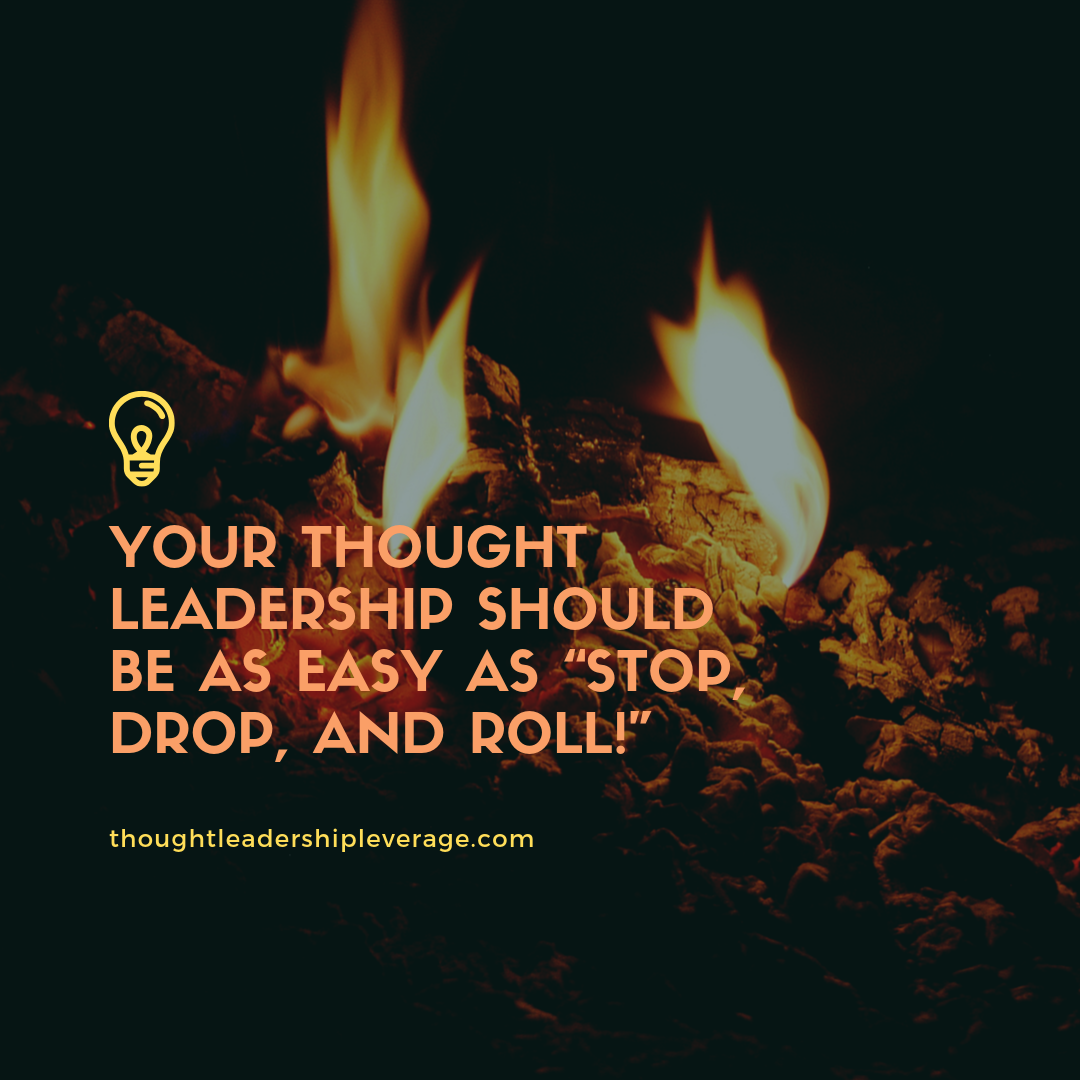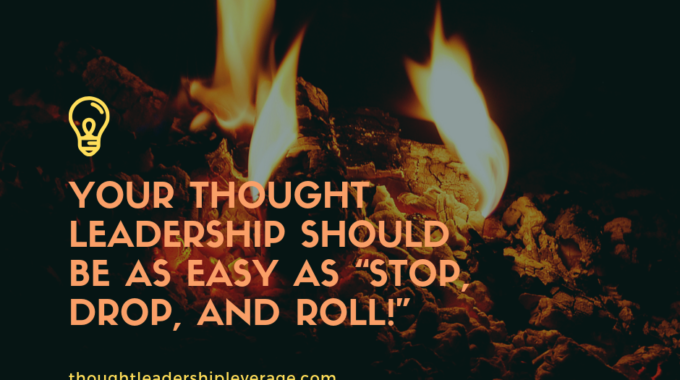Hey, thought leaders! I want to tell you about a powerful approach to thought leadership…
Your Thought Leadership Should Be as Easy as “Stop, Drop, and Roll!”
Thought leaders, by definition, have good insights they want to share. It’s fun to talk to them and explore their ideas at a cocktail party or informal gathering. They may have pithy stories or examples, and they’re engaging, smart, and energetic about their content. But—here’s the big question—are you going to remember their content (and how to apply it) on Tuesday afternoon when you’re stressed?
Remember the old adage that teaches you what to do if you’re on fire? Stop, drop, and roll! The directions are clear, memorable, and actionable. You can learn the three points quickly, yet they contain depth beyond their simple terms – putting out a fire means not panicking (stop) and cutting the flame off from oxygen (drop and roll). It’s not a 20-item checklist. It’s simple to remember, easy to apply, yet deep enough to encourage long-term thoughtfulness.

When people are stressed, we don’t deal well with complexity. It’s called “cognitive load;” the amount of mental effort necessary to push something from short-term knowledge into long-term recollection. Long lists and multi-step tasks are harder to remember under pressure. We need the clean elegance of “stop, drop, and roll” in order to change our behaviors when dealing with immediate adversity.
If you make your content teachable, it becomes more salable.
Clients and buyers have pain points that they want to address, and they’re looking for solutions that people will grasp, remember, and actually use. If your content is too complex, people aren’t going to be able to apply it when they need it the most. It needs to be memorable, and provide clear directives for behavioral change. The easier thought leadership content is to digest and apply, the more you change behavior. The more you can show that you can change behavior for the better, the more people will want to buy your material.
If you have five minutes with a CEO—or if a business leader sees your YouTube video or reads your blog—and walks away remembering the primary beats of your content, then that CEO knows their people will pick it up easily, too. Thought leadership content should be simple enough for a new-hire on the front lines to remember and apply, yet contain enough wisdom that senior level executives can come back to it repeatedly and find new insights.
The best thought leadership content has “onion skin.”
The deeper you go, the more you realize it has a great deal of acumen and wisdom. Remember that the person you’re selling to is on the wiser, more seasoned, more savvy side. They’ve mastered problems through trial-and-error over their careers, and now they’re trying to teach others the best way to handle issues that stumped them in the early parts of their careers. They want to grow their people’s abilities without leading them into pitfalls.
Keep your content sharp, easy to remember, and filled with depth – the “stop, drop and roll!” of thought leadership.




